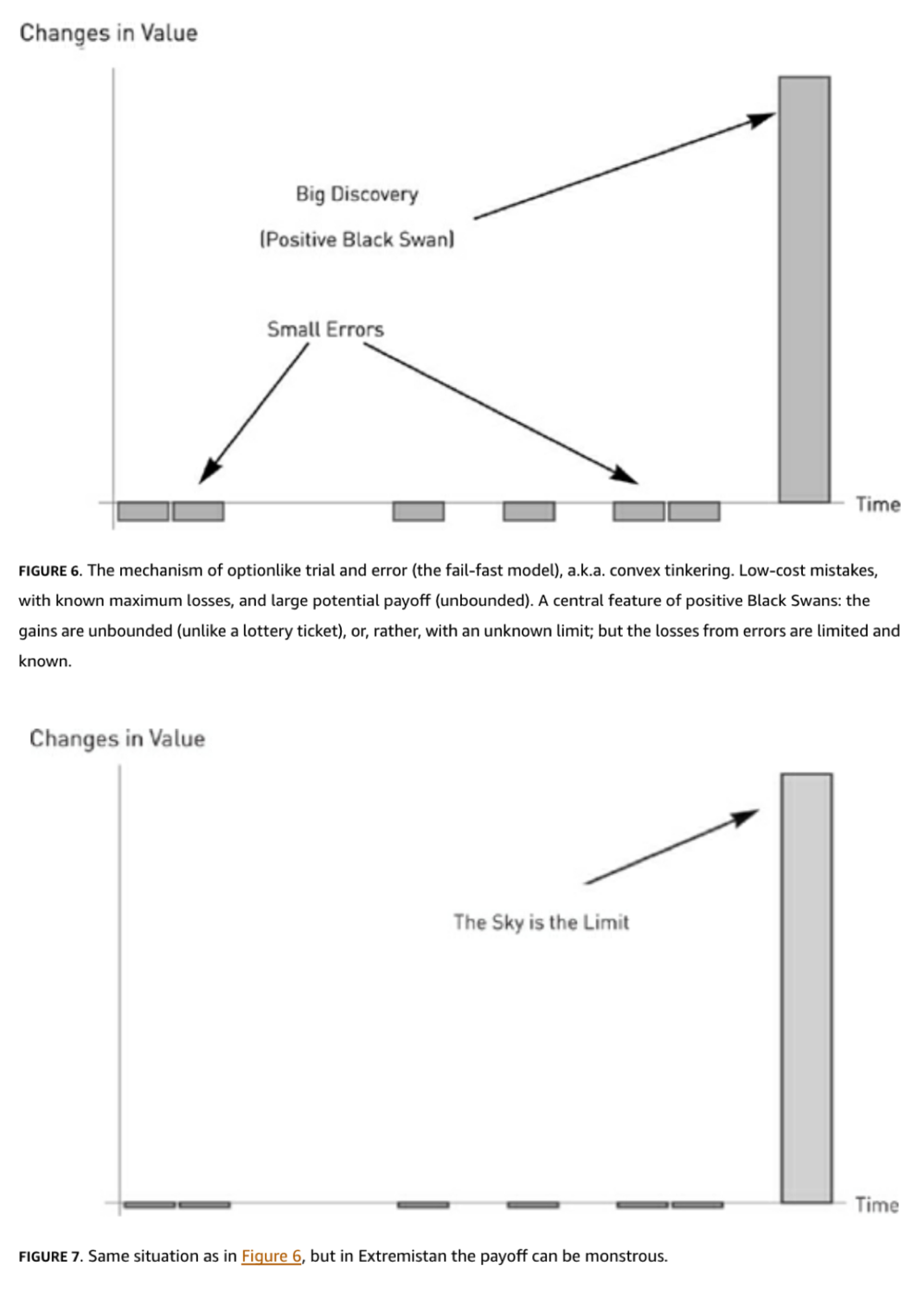
Some people think all success is luck. Some people think it’s all hard work.
The truth is somewhere in the middle.
To some degree, however, you can control how “lucky” you are.
Nassim Nicholas Taleb writes about this in Antifragile. He refers to it as “maximizing serendipity” and “tinkering.”
Tinkering — many small and iterative actions and experiments — results in outsized rewards, but usually at random.

Or as Nassim Taleb puts it, “Go to parties. You can’t even start to know what you may find on the envelope of serendipity. If you suffer from agoraphobia, send colleagues.”
Let’s say your goal is to find a suitable candidate for a spouse. Going to parties, then, is a way of tinkering towards that outsized reward.
The downside of going to a party is wasted time (capped risk), though you’ll still likely have some fun if you let yourself enjoy it. You don’t know which party will be a dud and which one will allow you to meet your spouse ahead of time, but you know that it will occur at some point in the time horizon. So you maximize your exposure.
Obviously, we can turn this lesson into a business one.
When you run a service business, it’s hard to get the timing right for when someone is in the market for an agency. All you can hope is that you’re top of mind and trusted when they’re in that mindset with the appropriate budget and attitude. To do that, you need to maximize your exposure to your target audience.
You can do that through conference speaking, cold email, LinkedIn posting, webinars, or tons of other methods. The key is that it’s targeted towards the right audience, the message resonates and builds trust, and you do it consistently. Because you don’t know WHICH conference will be the one that lands you a client (all you know is that it WILL happen at some point).
I don’t know which LinkedIn post is going to attract the eyes of a potential client for my agency, but I know that the cost of writing is low and the upside is high.
So I maximize the “surface area of luck” by producing daily LinkedIn posts (and so does my team).
Most of this, so far, has been oriented towards a very specific goal, like meeting a spouse or landing a client. It needn’t be.
When I worked at CXL early in my career, I wanted to learn as much as possible and grow my network in the experimentation world. So I would send at least 3 cold emails a day and try to get coffee with people twice a week. This paid dividends in friendships, business relationships, and opportunities.
It’s hard to predict which post or party will produce outsized returns. Just like in A/B testing, it’s hard to know which 10% of experiments will pay for the rest of them. Just like in SEO, you can write 10 blog posts and 4 of them will rank and 1 will drive a ton of conversions. It’s just hard to predict ahead of time which specific one will give you the outsized ROI.
So you keep taking shots on goal, maximizing your chances of getting “lucky.”
Recommended Reads
1. The Barbell Content Strategy — The Barbell Strategy is Omniscient’s core content marketing framework, also inspired by Nassim Taleb and explicitly designed to maximize luck while capping downside risk.
2. How Marketers Waste Time and Resources, and the Audacity of Big Goals with Jakub Rudnik — my recent podcast interview with Jakub explores themes like shots on goal, efforts vs reward, and the merits of velocity and tinkering.
3. Understanding is a poor substitute for convexity — Nassim Taleb’s semi-technical paper explaining the logic behind the principles above. Nerds only.



